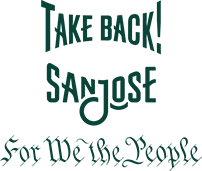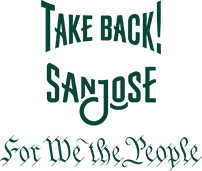
Georgia O’Keeffe: Sun Water Maine, 1922.
Like SJ’s system that reroutes street water into the SF Bay, LA’s urban runoff heads straight to its county beaches. Currently, many of these beaches are warning residents to avoid the water at all costs, due to high fecal-indicator bacteria (FIB). City Journal connects LA’s surging FIB numbers and sprawling homeless encampments in an insightful piece on preserving public safety.
L.A. County is comprised of 88 cities. These cities have separate systems for sewage, which is routed to treatment plants, and rainwater runoff, which is allowed to flow directly into waterways and the ocean. Sidewalks with drains usually have markers or are spraypainted with “no dumping” signs, letting the public know that they allow rainwater or any other substance to pass directly into waterways untreated. Keeping the two systems separate helps prevent stormwater from overwhelming treatment plants during heavy rainfalls, which can lead to releases of raw sewage. Unfortunately, very few cities in the region have urban runoff recycling programs (including Los Angeles, the largest city in the county), which means that anything contaminating city streets eventually gets washed into the ocean. This can lead to heightened levels of ocean contamination after big rainfalls. National officials are warning that Hurricane Hillary, California’s first tropical summer storm in recent history, could unleash more than a year’s worth of rain in one weekend, along with flooding. The storm will flush heavy toxins from our streets into the Pacific Ocean.
Urban runoff is even more of a problem in areas with large homeless encampments, since everything that lands in our streets—feces, needles, trash, and debris—ends up in our storm drains and gets dumped into the Pacific Ocean. L.A. County received 23 inches of rain during this past rainy season, far above the historical average of ten inches. However, L.A.’s rainy season has long since passed, so it is highly unusual that public-health officials continue to blame urban runoff for contamination….
L.A. County’s ongoing sewer overflows can be addressed through better management and infrastructure upgrades. But the parallel question of how much the region’s sprawling homeless encampments contribute to water pollution has yet to be studied, much less mitigated. The recent 2023 Greater Los Angeles Homeless Count results show a 9 percent rise in homelessness over the previous year, bringing the estimated population to 75,518. In addition to growing tent cities, L.A. County has seen an explosion of individuals living in recreational vehicles, often parked on residential streets since March 2020, when many municipal codes, including one that prohibits the use of vehicles as habitations, were suspended because of the Covid pandemic. As of today, officials have presented no clear timeline for the resumption of enforcement of codes prohibiting RV dwellings.
Public officials and the media rarely acknowledge the damage that illegally parked RVs inflict on the environment. The presence of so many RVs might explain the mystery of why beach contamination levels remain high even during Southern California’s dry summer months. Many RVs inhabited by homeless people are no longer operable, which means they can’t drive to authorized dumping stations. If they are draining their “blackwater” tanks directly into storm drains, that adds up to a substantial new source of raw sewage flowing directly to L.A. beaches. In other words, the region’s storm drains, designed to carry only rainwater, have become sewage lines emptying untreated effluent directly into the Pacific.
This article originally appeared in City Journal. Read the whole thing here.
RELATED:
- Insight: SF’s lack of encampment restrictions holds homeless folks back from getting help
- Illegal homeless camps realized as public safety threat?
- Report: Local progressives/conservatives join forces to challenge Ninth Circuit homelessness ruling
Follow Opportunity Now on Twitter @svopportunity

